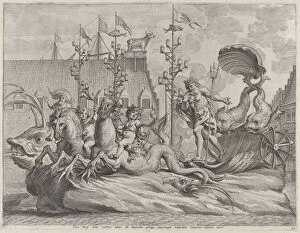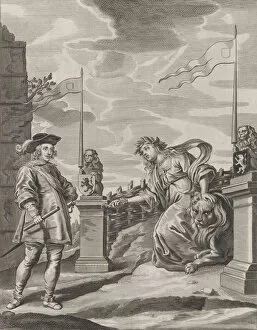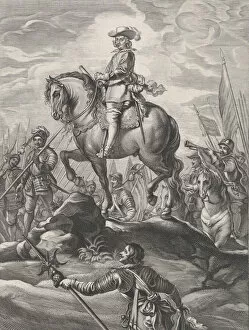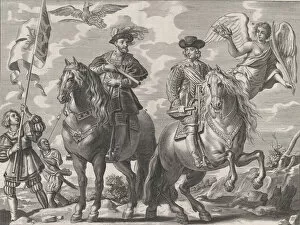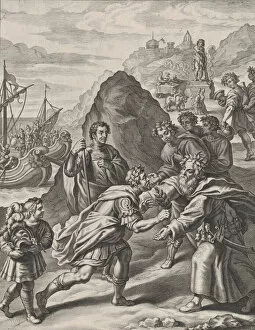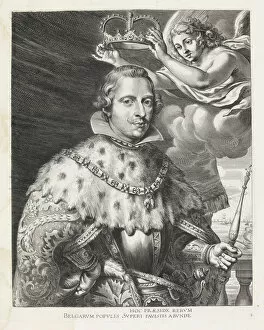Beke Collection
"Plate 35: Philip II of Spain, regally depicted as Neptune, riding in a chariot drawn by two sea horses, symbolizes his power over the seas
For sale as Licensed Images
Choose your image, Select your licence and Download the media
"Plate 35: Philip II of Spain, regally depicted as Neptune, riding in a chariot drawn by two sea horses, symbolizes his power over the seas. In contrast, Plate 1 shows Ferdinand I of Austria, portrayed as Mars, standing on a pedestal, emphasizing his martial prowess. Their alliance is illustrated in Plate 6, where Ferdinand receives the keys to the city of Ghent, and Plate 8, depicting their joint journey across the Alps. In Plate 10 they can seen on horseback with the King of Hungary. The crowning moment of their partnership comes in Plate 24, where Charles V is crowned Emperor by the Pope. Together they can an unstoppable force, as shown in Plate 20, where they ride on horseback. Aeneas' welcome by King Evander in Italy, as depicted in Plate 17, serves as a reminder of the legendary heroes who came before them. This series of plates, from Guillielmus Becanus' "Serenissimi," celebrates the reigns of these powerful monarchs and their shared triumphs.

